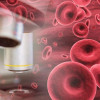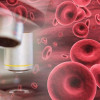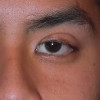
 Mr. Swapnil Bhowmick
Mr. Swapnil Bhowmick
Brain Aneurysm - Symptoms and Causes | Medtalks
Brain Aneurysm
A brain aneurysm is an artery malformation, in which a section of the arterial wall in the brain bulges and fills up with blood. It is also known as an intracranial aneurysm or a cerebral aneurysm.A brain aneurysm is a potentially fatal disorder that can strike anyone at any age. If a brain aneurysm bursts or ruptures, it is a life-threatening emergency that can result in a stroke, brain damage, and even death if not treated quickly.
Signs & Symptoms of a Brain Aneurysm
Aneurysms in the brain are unexpected and may not cause symptoms until they get big or burst. Large or ruptured aneurysms frequently produce distinct symptoms and need immediate medical attention. The symptoms and warning signals of a brain aneurysm differ depending on whether or not it has ruptured.
Unruptured Aneurysm
Small aneurysms usually do not show any symptoms. An aneurysm that grows in size, on the other hand, may begin to strain on nearby nerves and tissues, causing symptoms. Only 10 to 15% of unruptured aneurysms are thought to cause symptoms. An unruptured brain aneurysm might cause the following symptoms when present:
Headache
Eye discomfort
Weakness or numbness on one side of your face
Blurred or double vision
If you encounter any of these symptoms, contact your doctor as soon as possible.
Leaking Aneurysm
An aneurysm can rupture and spill a tiny quantity of blood into the brain. If you have a leaky brain aneurysm, you may feel a severe headache. This is known as a sentinel headache.
Ruptured Aneurysm
A burst brain aneurysm can cause the following symptoms:
Strong, abrupt headache
Double vision or hazy vision
Light sensitivity
Drooping eyelids
Difficulty in speaking
Dizziness or difficulty in walking
Seizures
Nausea
Vomiting
Loss of consciousness
Causes of Brain Aneurysm
Aneurysms in the brain occur as a result of structural abnormalities in the walls of an artery in the brain. These alterations lead the artery walls to grow weaker and thinner. The deformity can occur as a result of wall weakening, but it can also occur as a result of inflammation or trauma.
It is yet unknown what causes aneurysms to occur. However, it is thought that one or more of the following circumstances may enhance their development:
Elastic tissue breakdown inside the artery
Stress from blood flow through arterial tissue
Changes in the artery when inflammation levels rise
Risk Factors for Brain Aneurysm
A number of risk factors might raise your chances of getting a brain aneurysm. These are some examples:
Age: The majority of aneurysms are discovered in people over the age of 40.
Sex: Women are more prone than males to have aneurysms.
Family history: If aneurysms run in your family, your chances of getting one are increased.
High blood pressure: Untreated high blood pressure, often known as hypertension, can put additional strain on the walls of your arteries.
Smoking: Smoking can raise your blood pressure and damage the walls of your blood vessels.
Misuse of alcohol and drugs: Misuse of alcohol and drugs, particularly cocaine or amphetamines, can raise blood pressure and cause artery inflammation.
Brain damage: A severe head injury can damage blood arteries in your brain, resulting in the creation of an aneurysm in rare situations.
Genetic disorders: Certain hereditary diseases can cause artery damage or structural changes, increasing the likelihood of an aneurysm. Here are a few examples:
Polycystic kidney disease, inherited in an autosomal dominant manner (ADPKD)
Ehlers-Danlos Syndrome
Marfan Syndrome
Infections: Some infections can cause arterial wall damage and raise the risk of aneurysms. These are known as mycotic aneurysms.
Diagnosis of Brain Aneurysm
An aneurysm might also be identified during examinations for other health concerns like headaches or seizures. Brain aneurysms are diagnosed with imaging, which may see brain structures and arteries and detect the existence of an aneurysm.
The following imaging tests may be performed:
Magnetic Resonance Imaging (MRI)
Computed Tomography (CT)
Digital Subtraction Angiography (DSA)
Cerebrospinal fluid testing
Treatment of Brain Aneurysm
Surgery
If the aneurysm in the brain is accessible, surgery can repair it or shut off blood supply to it. This can help to prevent further development, rupture, or recurrence.Surgical clipping is a treatment that involves cutting off the blood supply to an aneurysm using a small metal clip. This closes up the aneurysm, stopping it from growing or rupturing further. Surgical clipping necessitates open brain surgery under general anaesthesia.
Another surgical technique for aneurysms is endovascular coiling.
Flow Diverters
A flow diverter is another emerging treatment option for a brain aneurysm. These devices are comparable to stents, which are used to treat heart artery blockages.Flow diverters are utilised when an aneurysm is too big to be treated surgically or when the surgical treatments outlined above are ineffective. Placing a flow diverter, like endovascular coiling, is a less intrusive method than surgical clipping.
Lifestyle Changes
Certain lifestyle adjustments may assist you in managing aneurysms and preventing them from rupturing. These modifications include:
taking efforts to manage hypertension
smoking cessation
eating a well-balanced diet rich in
fresh fruits
vegetables
whole grains
lean meat
low fat dairy products
weight management, if you are overweight or obese
regular, but not excessive, exercise
limiting coffee and alcohol use
abstaining from substances such as cocaine and amphetamines
Complications of Brain Aneurysm
A ruptured aneurysm in the brain might result in a hemorrhagic stroke. This occurs when blood seeps into the brain or the space between the skull and the brain (subarachnoid space).Bleeding from a burst aneurysm can result in a number of potentially fatal consequences. They can induce brain damage and coma if left untreated. In some situations, death may also occur.
Ruptured brain aneurysm may result in the following complications:
Seizures: Seizures can occur during or immediately after the rupture of an aneurysm.
Vasospasm: This happens when the blood capillaries in your brain suddenly constrict, shutting off blood supply to certain areas of the brain. Vasospasm is most likely within 24 hours following an aneurysm rupture.
Hydrocephalus: This occurs when CSF circulation is compromised and CSF collects in the brain, causing swelling. Hydrocephalus can develop within days following a burst brain aneurysm and can potentially be a long-term problem, necessitating the insertion of a shunt.
Brain aneurysm occurs when the wall of an artery in the brain becomes damaged, usually due to weakness or thinning. This can cause the arterial wall to bulge out and fill with blood. If an aneurysm ruptures, it can lead to life threatening bleeding in the brain. In some cases, an unruptured brain aneurysm may be managed through monitoring and lifestyle changes. However, larger unruptured brain aneurysms or those at a high risk of rupturing need to be addressed as soon as possible once they’re discovered.
Leaking or ruptured brain aneurysms are a medical emergency and require critical care management from experienced physicians in order to ensure the best possible outcome.
An unruptured brain aneurysm can sometimes be controlled with monitoring and lifestyle adjustments. Larger unruptured brain aneurysms or those at high risk of rupturing, on the other hand, should be treated as soon as possible when they're detected. A medical emergency, leaking or ruptured brain aneurysms require critical care management by expert physicians to achieve the best possible result.
References- Healthline

Mr. Swapnil Bhowmick
A motivated student of Medicine & Surgery (MBBS) at R. G. Kar Medical College & Hospital, Kolkata, having a knack for reading and composing medical literature. When he's not writing content for MEDtalks, Swapnil is usually looking up the latest trends and innovations in Medicine.








.jpg)





Please login to comment on this article